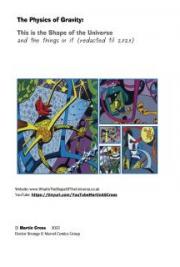VEDIC MATHEMATICS
The History, Discoveries And The Sutras
By William Q.

Learn More Vedic Mathematics Secrets
www.VedicMathematicsSecrets.com
Important: Giveaway-Rights And Copyright Information
Please note You Have Giveaway Rights to this eBook. You may give this book in whole away to anybody provided that the information contained herein is not altered in whatever way. However, no parts of this ebook may be reproduced for other use. Please read below for more information. Thank you.
ALL RIGHTS RESERVED
No part of this product may be reproduced in any form whatsoever, electronic, or mechanical, including photocopying, recording, or by any informational storage or retrieval system without expressed written, dated and signed permission from the author.
DISCLAIMER AND/OR LEGAL NOTICES
The information presented herein represents the views of the author as of the date of publication. Because of the rate with which conditions change, the author reserves the rights to alter and update his opinions based on the new conditions. This product is for informational purposes only and the author does not accept any responsibilities for any liabilities resulting from the use of this information.

While every attempt has been made to verify the information provided here, the author and his referrals cannot assume any responsibility for errors, inaccuracies or omissions.
Any slights of people or organizations are unintentional.
VEDIC MATHEMATICS CONTENTS
1. Vedic Mathematics …………………………………………………………. 04
2. Vedic Mathematics In Modern India ……………………………………... 10
3. Vedic Mathematics – The 16 Sutras And Corollaries …………………. 12
4. Conclusion ……………………………………………………………………. 16
Further Reading:- I. What Are The Vedas ……………………………………………………….. .. 19
II How The Vedas Came Into Existence …………………………………….. 26
III. Types Of Vedas And Their Significance ………………………………... 29
IV. Distinction Between The Vedas ………………………………………….. 38 V. What Is The Vedic Way Of Life ……………………………………………. 46
LEARN THE SECRET METHODS OF VEDIC MATHEMATICS How To Apply The Sutras In Everday Maths! Click Here To Find Out More

1. VEDIC MATHEMATICS
Vedic Mathematics and Hindu religion are intertwined to an extant that separating the two would be tantamount to a sacrilege. The birth of Vedic Mathematics is lost in the womb of time. The exact date when the Vedas were written is not clear. Different dates are given by different authorities. Western philosophers and researchers have always treated Greek culture as superior to the Indian and even Arabic cultures. The birth of Vedic texts is therefore claimed to be much later than the two. It is therefore not surprising that the value of pi and the discovery of zero have been popularly viewed as Greek and Arabic in origin. It is assumed that civilization, as it is seen today, is centered on the Greeks just like the Christian belief that the Sun rotates around the earth. This unshakable dogma has for long relegated the importance of Indian civilization to the background.
It is only now that the world is realizing the importance of Indian philosophy and the way of life. Yoga in its many forms and manifestations has become a rage in America. Every street and gymnasium boasts of a Yoga guru. The elevated status of India in the world economy has much to do with the revival of interest in all things Indian. But the ignorance surrounding Indian history and its glorious past is more due to the fact that Hindu scriptures are essentially religious in nature. Vedic math as it is known today is not gleaned from a single source. It is essentially a compendium of methods derived from different Vedic literature.
Another major hurdle in uncovering the secrets of Vedic Mathematics has been the obscure language in which it has been written. A direct logic conclusion is

therefore not possible. It is intuitive and requires a thorough understanding of not only the language but also the nuances of the text. The mathematical formulae have been beautifully woven into stories and allegories which are beyond the comprehension of a common man. As we talk about the sutras directly related to the Vedic Mathematics, the complexities involved in extraction of information will become clear.
Vedic Mathematics may have been ignored for a long time for whatever reasons but it has become a rage in most of the campuses in Europe and the United States. The western world has picked up the cudgels with a vengeance. At the same time, the science of Vedic Mathematics is languishing in the country of its origin. One of the Professors in an American university expressed his amazement at to how sixteen sutras can unravel the complete mathematical code and that too mentally.
It is indeed fascinating to read about the origins of Vedic mathematics.
The impetus to Vedic Mathematics was given by the sacrificial rituals performed by the Vedic priests. The name ‘sutra’ is derived from the Sanskrit which means a “thread”. This thread was required to measure the exact size of the sacrificial alter. Myriad calculations developed from this requirement. If the Vedic religion gave rise to a study of mathematics for constructing sacrificial altars, then it was Jaina cosmology which led to ideas of the infinite in Jaina mathematics.
Later mathematical advances were often driven by the study of astronomy. Well perhaps it would be more accurate to say that astrology formed the driving force since it was that "science" which required accurate information about the planets and other heavenly bodies and so encouraged the development of mathematics.
Religion too played a major role in astronomical investigations in India for accurate calendars had to be prepared to allow religious observances to occur at the correct times. Mathematics then was still an applied science in India for many centuries with mathematicians developing methods to solve practical problems.

Page 5
Tracing the history of mathematics during the earlier centuries, the name of Yavanesvara, in the second century AD cannot be overlooked. He played an important role in popularizing astrology when he translated a Greek astrology text dating from 120 BC. His specific contribution goes beyond the literal translation. He popularized the text, by resetting the whole work into Indian culture using Hindu images with the Indian caste system integrated into his text. This is an important contribution since, mathematics seen as separate from religion would have been unacceptable to the general public and more so to the Hindu pundits of that era. This merger into Hindu gods and goddesses was an effective method to assimilate the knowledge of other civilizations.
By about 500 AD the classical era of Indian mathematics began with the work of Aryabhata. His work was both a summary of contemporary Jaina Mathematics and the beginning of new era for astronomy and mathematics. His ideas of astronomy were truly remarkable. He beautifully wove a scientific thread of reason and popular religion with and astronomical calculations, based on the Greek epicycle theory, giving a new interpretation of the two demons Rahu, the Dhruva Rahu, which causes the phases of the Moon and the Parva Rahu which causes an eclipse by covering the Moon or Sun or their light, with a modern theory of eclipses. He introduced trigonometry and integer solutions indeterminate equations which arose in astronomical theories.
Aryabhata , a renowned scholar and astronomer worked and lived in
Kusumapura in the northeast of the Indian subcontinent. His work was of such seminal importance that his ideas formed the basis of further research in
mathematical and astronomical research in India for many centuries to come. At the same time, Ujjain rose as another epicenter of astronomical research.

Varahamihira another scholar in Astronomy was a gigantic figure who worked from this center of knowledge. His work on trigonometry is noteworthy. It is to be noted that mathematics remained a tool for exploration of the heavenly bodies. The concept of mathematics as a pure science was not an acceptable concept in India. This is because mathematics evolved as a means for conducting religious ceremonies and later in Jaina philosophy as a tool to determine the position of the stars and planets.
The fascination of Jaina philosophy with astronomy and the science of celestial bodies automatically led to an interest in the concept of infinity. It continued to flourish with scholars such as Yativrsabha. He was a contemporary of Varahamihira and of the slightly older Aryabhata. Together, the two schools of Astronomy were involved in the continuing developments of the numerals and of place-valued number systems. By the seventh century a new figure rose from the Ujjain school. Brahmagupta, made one of the most major contributions to the development of mathematics with his outstanding contribution on negative numbers and zero. It is a sobering thought that eight hundred years later European mathematicians would be struggle to cope without the use of negative numbers and of zero. These were certainly not Brahmagupta's only contributions to mathematics. He made other major contributions to the understanding of integer solutions to indeterminate equations and to interpolation formulas invented to aid the computation of sine tables.
It is important to understand the social, cultural milieu of the times when these seminal works were produced. The educational system in India at the time did not allow talented people with ability to receive training in mathematics or astronomy. Rather, the whole educational system was family based. There were a number of families who carried the traditions of astrology, astronomy and mathematics forward by educating each new generation of the family in the skills which had been developed. We should also note that astronomy and mathematics developed on their own, separate for the development of other areas of knowledge.
The tradition of family education led to a situation where knowledge databases, so to say, were confined within the families themselves. The commentaries and explanations most probably continued to be passed from generation to generation. Many of the commentaries would be commentaries on commentaries on commentaries etc. Mathematicians often wrote commentaries on their own work. They would not be aiming to provide texts to be used in educating people outside the family, nor would they be looking for innovative ideas in astronomy.
Astronomy was considered to be of divine origin and each family would remain faithful to the revelations of the subject as presented by their gods. The problem was that accepting new concepts and ideas was almost blasphemy and religious beliefs being intertwined with astronomy became a major hurdle in the
acceptance of new ideas. Another issue which has been remarked upon is that there was no systematic calculation or observation and there does not seem to have been a major observational program set up. Paramesvara in the late
fourteenth century appears to be one of the first Indian mathematicians to make systematic observations over many years.

A contemporary of Brahmagupta who headed the research centre at Ujjain was Bhaskara who led the Asmaka School. This school would have the study of the works of Aryabhata as their main concern and certainly Bhaskara was
commentator on the mathematics of Aryabhata. More than 100 years after Bhaskara I lived the astronomer Lalla, another commentator on Aryabhata.
The ninth century saw mathematical progress with scholars such as Govindasvami, Mahavira, Prthudakasvami, Sankara, and Sridhara. Some of these such as Govindasvami and Sankara were commentators on the text of Bhaskara I while Mahavira was famed for his updating of Brahmagupta's book. This period saw developments in sine tables, solving equations, algebraic notation, quadratics, indeterminate equations, and improvements to the number systems. The agenda was still basically that set by Aryabhata and the topics being developed those in his work.
The main mathematicians of the tenth century in India were Aryabhata II and Vijayanandi, both adding to the understanding of sine tables and trigonometry to support their astronomical calculations. In the eleventh century Sripati and Brahmadeva were major figures but perhaps the most outstanding of all was Bhaskara II in the twelfth century. He worked on algebra, number systems, and astronomy. He wrote beautiful texts illustrated with mathematical problems, some of which we present in his biography, and he provided the best summary of the mathematics and astronomy of the classical period.
It was over 200 years before any other major contributions to mathematics were made on the Indian subcontinent. In fact for a long time it was thought that Bhaskara II represented the end of mathematical developments in the Indian subcontinent until modern times. However in the second half of the fourteenth century Mahendra Suri wrote the first Indian treatise on the astrolabe and Narayana wrote an important commentary on Bhaskara II, making important contributions to algebra and magic squares. The most remarkable contribution from this period, however, was by Madhava who invented Taylor series and rigorous mathematical analysis in some inspired contributions. Madhava was from Kerala and his work there inspired a school of followers such as Nilakantha and Jyesthadeva.
Some of the remarkable discoveries of the Kerala mathematicians include a formula for the ecliptic; the Newton-Gauss interpolation formula; the formula for the sum of an infinite series; Lhuilier's formula for the circum-radius of a cyclic quadrilateral. Of particular interest is the approximation to the value of π which was the first to be made using a series.
This formula, as well as several others referred to above, was rediscovered by European mathematicians several centuries later. Madhava also gave other formulae for π, one of which leads to the approximation 3.14159265359.
The first person in modern times to realize that the mathematicians of Kerala had anticipated some of the results of the Europeans on the calculus by nearly 300 years was Charles Whish in 1835. Whish's publication in the “Transactions of the Royal Asiatic Society of Great Britain and Ireland” was essentially unnoticed by historians of mathematics. Only 100 years later in the 1940s did historians of mathematics look in detail at the works of Kerala's mathematicians and find that the remarkable claims made by Whish were essentially true.
2. VEDIC MATHEMATICS IN MODERN INDIA
One of the names worth mentioning in the development of Vedic mathematics in modern India is that of Sant Kumar Kapoor. He has authentically expounded the foundations of all order in nature, as the basis of the Vedic literature available to us through the time honored oral Vedic tradition. His Ph.D. thesis has
reaffirmed the authenticity of the Veda and Vedic literature .With mathematical precision he has reestablished the credibility of Vedic literature as the most orderly and comprehensive literature. Modern Indian philosophers believe that this has the potential to revolutionize education in all parts of the world and bring perfection to life on Earth. It is claimed that this revival of the absolute order with

which the unified wholeness of natural law functions and maintains orderliness at every stage of evolution of life is a blessing in this scientific age.
Sant Kumar Kapoor has carried out extensive research work in Vedic Mathematics. He has developed concepts involved in the structure of “Om” and the two Vedic structures “Know Brahman quarter by quarter” and “know fourth quarter Brahman as integrated value of the first three quarters.” He has also developed Vedic concepts of multi-dimensional geometrical space and structural frames and systems. He has established that the regular bodies of geometrical domains constitute a framed domains sequence.
an/2nan–1, where n = 1, 2, 3, 4, ........ and a = dimensional unit.
Using the above concepts, he has analyzed several Vedic scriptures. He has published several works in many international journals. Some of his contributions are :
(i) Mathematical concepts and application to structural frames and systems of
Sri Vishnu Sahastranam Stotram.
(ii) Vedic mathematical concepts and applications to structural frame and systems of
Sama Veda Samhita.
(iii) Vedic mathematical concepts and application to structural frames and systems of sixteen sutras.
(iv) Vedic mathematical concepts and application to structural frames and systems of Shrimad Bhagwad Geeta.
(v) Vedic mathematical concepts and application to unsolved mathematical problems – Five proofs of Fermat’s Last Theorem.
The last one “Fermat’s Last Theorem” has been published in the form of a book. Three Proofs have been published as a research paper in M.I.U. Journal “Modern Science & Vedic Science” Vol.3, No. 1, pp 75-104, 1989 USA. The two proofs have been submitted as a research paper to “Mathematical Reports of the Academy of Sciences” Canada. This work has acquired great importance because the original theorem was proposed by French Attorney and mathematician Pierre de Fermat in 1637 and nobody has succeeded in getting the proof in spite of continuous attempts by distinguished mathematicians for more than 350 years.
3. VEDIC MATHEMATICS - THE 16 SUTRAS
The revival of Vedic Mathematics is no less than a miracle. Extracting the
theorems and corollaries from religious texts requires not only an understanding of the scriptures but also a genuinely intelligent mind. Jagadguru Swami Bharti Krisna Tirthahji Maharaj, Shankracharya of Sharda Peeth and Goverdham Math discovered 16 Vedic Sutras and 13 Upsutras in the Parishistha of
Atharvved. This he achieved through rigorous tapas and transcendental
meditation. Through sheer intuition and scholarly pursuit he was able to decode them and get wide ranging mathematical principles and applications from them. He found that these Sutras covered all aspects of modern mathematics. He wrote extensively on the subject, but unfortunately he later discovered that none of his works had been preserved. In his old age with his failing health and

eyesight, he wrote from his memory an introductory account of the subject. He attained Mahasmadhi in 1960. A book on Vedic Mathematics was published in 1965 and was edited on the basis of manuscript and notes left by Swamiji. This book is the first of its kind which explores the Vedic basis of mathematical calculations.
After many decades there has been a fresh interest in the subject both among Indian scholars and foreigners. It may be noted that at the time of the publication of the book a controversy arose about the source of these 16 Sutras and the level of mathematics contained in them. One view was that these Sutras do not have a Vedic source and that they deal only with simple arithmetical operations.
The latest research in Vedic mathematics suggests that there are sixteen Sutras which have been expanded upon by an additional thirteen Sub-Sutras or corollaries. A brief discussion on each of these is in order.
The Sutras
1.“Ekadhikena Purvena” "By one more than the previous one"
The working of the Sutra is quite simple. In the case of the vulgar fraction 1/19 whose denominator ends with 9, in the normal method 18 steps are required. But with this Sutra it can be accomplished in only one step. The actual calculations and steps are beyond the scope of this writing. This is just to show the ease with which we can apply Vedic mathematics to everyday calculations as well as for solving complex equations.
2.
Nikhilam Navata[caramam Da[atah "All from 9 and the last from 10"
This is a cryptic Sutra for multiplying numbers. According to Vedic maths multiplication tables are not required beyond the 5 multiplied by 5. It is claimed that with this sutra multiplication becomes a Childs play.
3.
The jrdhva Tiryaghym Sktra "Vertically and crosswise (multiplications)"
This is another short Sutra for multiplication
4.
Parvartya Yojayet "Transpose and apply"
This Sutra is used to solve simple equations
5. Sknyam Smyasamuccaye "If the Samuccaya is the same (on both sides of the equation, then) that Samuccaya is (equal to) zero"
This Sutra is used to solve special type of equations. “ Samuccaya” is a technical term which has several meanings in different contexts. In fact, a single word taking on different meanings is the beauty of Sanskrit text. At the same time it is also confusing and confounding to those who have not mastered the language. If looked at it from different angles, Sanskrit is a boon as well as a bane. Misunderstanding and misinterpreting is quite common among scholars. In as much as the scriptures are concerned, the meaning of words becomes all the more important.
6.
(Anurupye ) Sunyamanyat ( If one is in ratio the other one is zero)
There are some simultaneous equations which may involve large numbers and may therefore seem hard to solve, but owing to certain ratios between the coefficients can be readily and easily solved using this Sutra.

Page 14
7. Sankalana-vyavakalanabhyam
8. Puranapuranabhyam
9. Calana-kalanabhyam
The above three Sutras are used in solving different types of quadratic equations.
10.Yavadunam
This Sutra is used for squaring and cubing.
11. Vyastisamastih
12.Sesanyankena Caramena
13.Sopantyadvayamantyam
14.Ekanyunena Purvena
15.Gunitasamuccayah
16. Gunakasamuccayah
The above Sutras are used for different mathematical calculations in conjunction with other Sutras.
Subsktras or Corollaries
1. Anurupyena
2. Sisyate Sesasamjnah
3. Adyamadyenantyamantyena
4. Kevalaih Saptakam Gunyat
5. Vestanam
6. Yavadunam Tavadunam
7. Yavadunam Tavadunikrtya Varganca yojayet
8. Antyayor-Da[ake'pi

9. Antyayoreva
10. Samucccayagunitah
11. Lopanasthapanabhyam
4. CONCLUSION
Hinduism is not only a religion but a way of life. Vedas which are the equivalent of the ‘Bible’ for Hindus is an ancient knowledge which passed from one generation to another by word of mouth. In ancient times, the knowledge of Vedas could be acquired only by the Brahmin class and was not widely available. Since no written texts existed, many of the Vedas have been lost in posterity. Moreover, the resonance and meter of the Vedic rendition was very important for ritualistic purposes. The exact pitch and frequency was critical to the success or failure of the yagas or rituals. The end result is that the history and origin of Vedas could not be established. Historians have estimated the birth of Vedas according to what fits their individual theory. As a result there are as many dates as there are historians, which do not help matters much.
Vedic Mathematics came out of the closet, so to say, in the middle twentieth century, thanks to the efforts of Sri Jagatguru Swami Sri Bharati Krsna Tirthaji Maharaja. His contribution to the understanding of Vedic mathematics as it stands today is phenomenal. In fact, the 16 Sutra he has culled from the enormous depth of the Vedas is unimaginable. There is a debate among the scholars if it is at all possible to extract these Sutras from the Vedas.
Controversies abound in this speculation. According to some Vedic experts, there is no mention of these Sutras in any of the Vedic texts. Some have even gone to the extent to say that it is all a figment of imagination and a decoy used by Tirthaji Maharaj. Now why should a spiritual person give credit to the Vedas for a work conceptualized by himself is not understood. The non believers contend that this may have been done to elevate the importance of this style of mathematics by claiming it to be of divine origin. To some this argument seems to make sense. On the other hand there are Vedic scholars who straightaway dismiss these arguments as blasphemy. They say that Vedic knowledge is not only gained from a reading of the text but by spiritually gaining access to the knowledge. They claim that knowledge is multi dimensional and intuition plays an important part. It is not possible for a materialistic western thinking to fathom the intricacies of Hindu culture and thought.
There is no doubt in anyone’s mind that mathematics evolved in ancient India not separ








